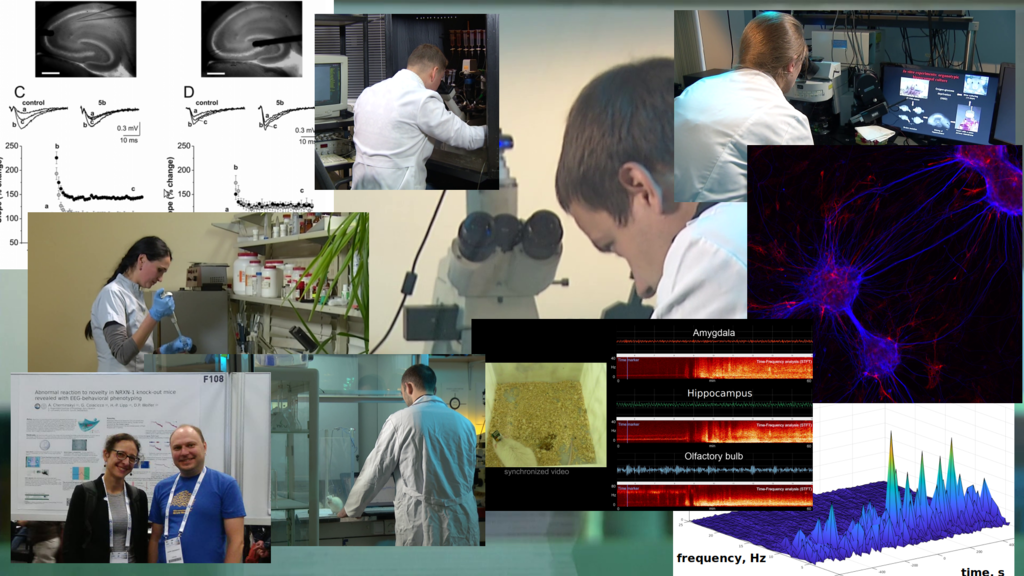Research
Our research
Our Department research is focused on the role of membrane proteins, mainly ion channels and metabotropic receptors, in the functioning of single neurons, neural networks, and the whole organs. The current research topics of the Department are:
- biophysical and pharmacological properties of ion channels and receptors of cellular membranes (plasmalemma and nuclear envelope);
- molecular mechanisms of epilepsy and epileptogenesis and pharmacological agents with antiseizure properties;
- role of membrane receptors and ion channels in synaptic plasticity, learning, integral activity of nervous system and behavior;
- peripheral and central mechanisms of pain and possible ways of its correction;
- using of stem cells for the treatment of neurological disorders (Alzheimer’s, Parkinson’s disease, epilepsy, and ischemic stroke) and
traumatic injuries of the spinal cord.
Methods
Highly qualified Departments staff has strong expertise in virtually all electrophysiological techniques, various disease models and cell/tissue cultural techniques allowing studying physiological functions and some pathologies from molecular to system levels including:
- pharmacological patch-clamp studies of different ion channels in acutely isolated cells (pyramidal neurons from hippocampus, cortex, and hypothalamus; Purkinje and granule neurons from cerebellum; spinal dorsal horn neurons; primary sensory neurons; glial cells), cultured cells (the same as above; cancer cell lines) and heterologous expression systems (HEK293, CHO, and PC-12 lines);
- registration of electrical activity of single neurons, local field potentials, EEG in freely behaving animals;
- isolation and cultivation of stem cells and tissue engineering;
- electrophysiological studies of primary nociception ex vivo and in vivo;
- seizure-like activity in acute isolated and cultured brain slices in various models of epilepsy as well as intracranial EEG in various in vivo models of epilepsy;
- a wide range of behavioral tests (open field, different mazes, Morris water maze, etc) that allow us to study general locomotor activity, anxiety and depression-like behavior, learning and memory, social behavior, etc.

Collage (clockwise): ”The effect of ASIC1a inhibition on hippocampal LTP (Buta A et. al, J. Med. Chem. 2015); patch-clamp technique (V. Kulyk); confocal microscopy of neural stem cell culture and neurospheres – astrocytes are red, neurons blue (O. Rybachuk); brain structures’ LFPs in freely moving rat and it’s spectrogram (R. Bohovyk); meeting colleagues at FENS Forum (A. Cherninskyi and E. Knapska); making artificial cerebrospinal fluid (O. Iegorova); central — specimens’ microscopy (M. Fedoriuk).”